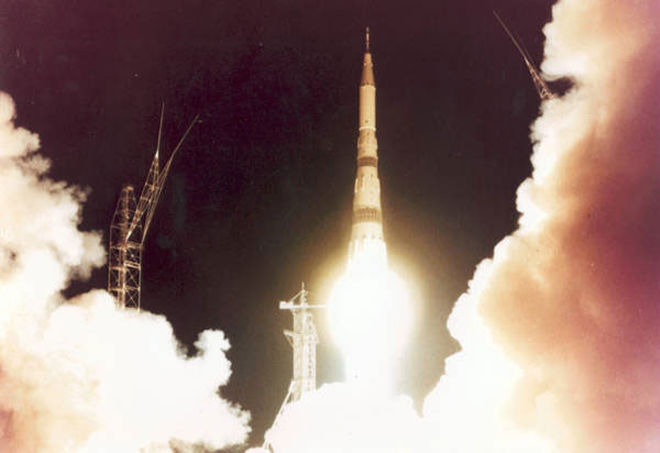
It has been a terrible decade for the Russian launch industry, which once led the world. The country's long-running workhorse, the Proton rocket, ran into reliability issues and will soon be retired. Russia's next-generation rocket, Angara, is fully expendable and still flying dummy payloads on test flights a decade after its debut. And the ever-reliable Soyuz vehicle lost access to lucrative Western markets after the Russian invasion of Ukraine.
Yet there has been a more fundamental, underlying disease pushing the once-vaunted Russian launch industry toward irrelevance. The country has largely relied on decades-old technology in a time of serious innovation within the launch industry. So what worked at the turn of the century to attract the launches of commercial satellites no longer does against the rising tide of competition from SpaceX, as well as other players in India and China.
Through the first quarter of this year, Russia has launched a total of five rockets, all variants of the Soyuz vehicle. SpaceX alone has launched 32 rockets. China, too, has launched nearly three times as many boosters as Russia.
However, Russia has a plan to reclaim the dominance it once held in the global launch industry. In a recent interview published on the Roscosmos website (a non-geo-blocked version is available here) the chief of the Russian space corporation, Yuri Borisov, outlined the strategy by which the country will do so.
AdvertisementThe first step, Borisov said, is to develop a partially reusable replacement for the Soyuz rocket, called Amur-CNG. The country's spaceflight enterprise is also working on "ultralight" boosters that will incorporate an element of reusability.
"I hope that by the 2028–2029 timeframe we will have a completely new fleet of space vehicles and will be able to restore our position in the global launch services market," Borisov said in the interview, which was translated for Ars by Rob Mitchell.
A miracle, Amur
Russia has previously discussed plans to develop the Amur rocket (the CNG refers to the propellant, liquified methane). The multi-engine vehicle looks somewhat similar to SpaceX's Falcon 9 rocket in that preliminary designs incorporated landing legs and grid fins to enable a powered first-stage landing.
The country's space industry first unveiled its Amur plans back in 2020, when officials said they were targeting a low price of just $22 million for a launch on Amur, which would be capable of delivering 10.5 tons to low-Earth orbit. Essentially, then, it would offer about half the carrying capacity of a Falcon 9 rocket for one-third of the price.
At the time, Roscosmos officials were targeting a 2026 debut for Amur. Had they been able to deliver such a capability, it would undoubtedly be an attractively priced offering. Alas, the year 2026 appears to be off the table now. Through his comments, Borisov indicated that Amur will not be ready before 2028 or 2029.
Since there has been almost a year-for-year slippage in that date since Amur's announcement in 2020, it seems likely that even this target late in the decade is unrealistic.
Ultra-light booster
Borisov also references the development of ultra-light boosters—an interesting comment given that the trend in the global launch industry has been away from small rockets toward medium- and heavy-lift boosters. Here's what Borisov had to say about the development of a small-lift rocket by Russia.
"Two to three years ago, the Foundation for Advanced Research began work on something like a startup, but the work was kept quiet since the planned booster is supposed to be innovative in terms of manufacturing technology, including new castings and composite materials," Borisov said. "Testing of experimental stages for the future booster took place that were in principle successful, showing that we're on the right design track. Now we're interested in engine manufacturing and firming up their specs."
This is likely in reference to the "SLK launch vehicle," which could carry approximately 400 kg to low-Earth orbit in reusable mode and 600 kg in fully expendable mode. This vehicle may include a folding-wing solution for gliding back through Earth's atmosphere.
As with the Amur vehicle, dates for this rocket's development should be treated with great skepticism. When the Kremlin-operated news service TASS reported on the SLK rocket in 2021, it had an inaugural launch date of 2024.
Ultra-heavy booster
Many Russian officials were among those skeptical about the development of the massive Starship rocket by SpaceX, particularly because its first stage relies on firing 33 Raptor engines during its ascent toward orbit.
AdvertisementRussia's space program, under the direction of revered rocket scientist Sergei Korolev, tried to do this with the super-heavy N1 rocket in the 1960s. Its first stage was powered by 30 NK-15 engines. Four launch attempts from 1969 to 1972 all ended in failure.
"The N1 was far ahead of its time, with its ambitious goals exceeding the technology level of its era," Borisov said. "One issue was control of multiple engines; existing systems couldn't handle synchronous control of so many engines, the main reason why N1 was a fiasco."

But now that Starship has been successful—during its second and third test flights, the first stage of the SpaceX rocket had nominal performance, with all Raptor engines firing as intended—Russia is considering an ultra-heavy booster.
"Like the N1, Amur-CNG will be powered by a multi-engine design," he said. "If successful, we hope to be able to transition the same design principles into an ultra-heavy booster. So we are working on the same trail blazed by Korolev."
This may all play well with a domestic audience in Russia, but let's be real. Russia's launch industry is a pariah in the West, and the country is likely a decade away from deploying a vehicle that might be competitive with the Falcon 9. Its plans for an ultra-heavy booster are completely fantastical.


















